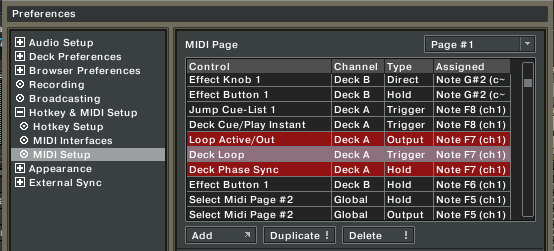You may have noticed that native instruments recently uploaded a series of interesting videos with Ritchie Hawtin explaining his work flow with Traktor. Mr. Hawtin was legitimately one of the first proponents of digital djing and did some very creative work with music and visuals at Mutek several years back, but he has not shown us anything new in a while. So it was nice to see a fresh take on his current work flow which exhibit 2 excellent techniques that you need to know. Thats brings us to our letter of the week:
I need help with traktor. If you watch the above video, Richie Hawtin somehow gets all of his 4 decks to sync up after he kicks out of his loops. How is this done? I know he assigns a sync button to the loop button as a double function, but how is it actually done? Thank you
~Newbie Aj
The technique he is demonstrating in the video is very simple but highly effective as some of the best ones usually are. It involves double assigning any button to “Deck Loop” and “Phase Sync”. This is called a macro command where one key stroke performs several actions. Take a look at this photo and you will see how I have added that technique to our own VCI-100 SE TKS file.
In the above TKS you see that 3 functions are in red which is telling me that they are all assigned to the same midi button. The “Loop Active/Out” command tells my midi controller to light up when the function is engaged. I have deck phase sync set to “HOLD” so it only works as long as the button is held down. Then I can adjust the sync manually to suit the song.
What does Deck Phase Sync do?
It automatically lines up the peak transients (highest points of enegry, usually the kick and snare) of 2 songs. It does not match the tempo but lines up the beats so they are hopefully in time.
Why would you do that?
When you start working with multiple micro loops, things can get confusing. Releasing the loop on time is almost impossible, especially if you want to release several micro loops at once. In Ritchie’s example he has 2 tracks mixing together and just before a build up drops 2 loops, works them into a mush and then releases both loops. Since releasing the loop also engages a temporary sync, the tracks will release on time together- a nearly impossible feat otherwise.
Uh-Oh
You might start playing around with this technique and realize:
“cool, this works great on most tracks but some come back together and are slightly off”. That question brings up a very important topic that we will cover next week on Monday. Its questions of Phase, beat markers and on the fly beat marker position nudging!






